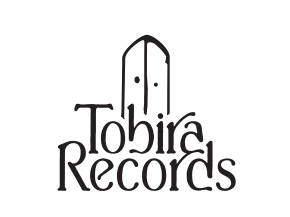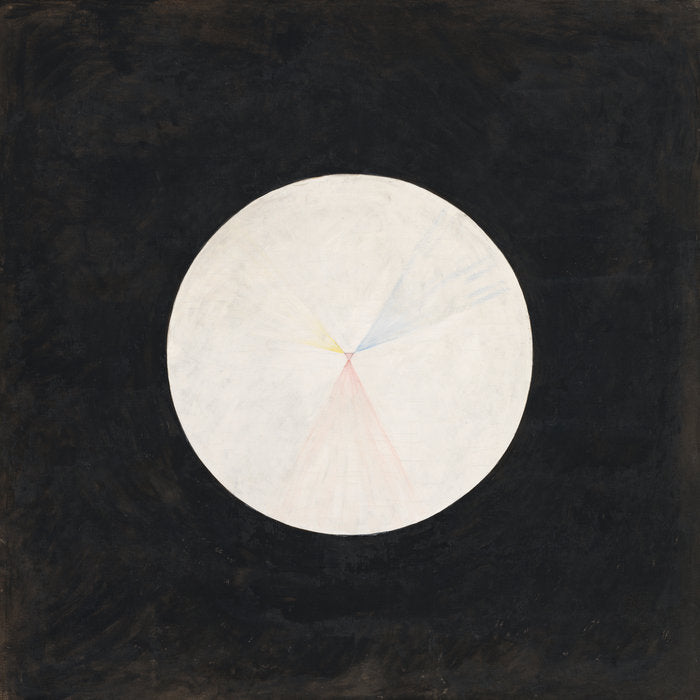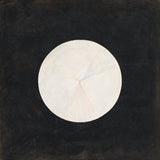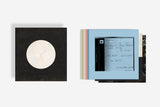Ákos Rózmann // MASS / MÄSSA - 7xCD BOXSET
- Availability:
ハンガリー・ブダペストの実験音楽家Akos Rozmannの7CD BOXセットです。
以下、レーベル解説です。
Ákos RózmannのMassは、1989年から2004年の間に作曲家のスタジオとストックホルムのEMSで制作された12の電子音響作品から構成されています。ロズマンが作曲したほとんどの作品と同様に、『ミサ』は約7時間の長大な作品である。
ロズマンの《ミサ》は、カトリックのミサの第一部である「キリー」と「グローリア」についての個人的な観察による巨大なフレスコ画であると表現することができる。ミサのテキストに対する極めて主観的な視点は、ロズマン自身の言葉で言うところの「トロペ」、つまりミサのテキストの特定の言葉やそれとの関連に対するスウェーデン語、ハンガリー語、ラテン語による瞑想のイメージを凍らせることで強調されている。いくつかのパッセージはミサ文とは無関係である。グローリアIのオルガン曲VI(銀と踊りの夜想曲という副題もついている)は、「Natten gråter」(夜が泣いている)というフレーズに基づく一種の哀歌である。グローリアIに続く間奏曲は、スウェーデンのコンサートホールでよく見られる、コーヒーカップの衝突や官僚的な音楽関係者の空虚なおしゃべりを盛り込んだ構成になっており、作曲者の独特のユーモアが感じられる。
ミサ曲の全体的な形式構造は複雑で、さまざまなパートが独立した曲として、また曲の全体構造の中で小グループの一部として同時に機能している。独立した曲として、オルガン曲という名前で演奏されるものもある。例えば、ミサの最初のグローリア部分に含まれる3つの曲は、トリプティコンという別の独立した作品を形成しており、1996年に独立した作品として初演されている。
ミサ曲の前半では、ミサ文の言葉によって表される「正の力」と、軽蔑的な笑い、うなり声、ゲップ、吐き気をもよおす窒息音、嘔吐音など、さまざまな挑戦的音によって表される「負の力」の戦いが繰り広げられる。まず、ネガティブな力がポジティブな力を「ブラックホール」あるいはポケットの中に引きずり込みます。その後、ポジティブな力が戻ってきて、グロリアの残りの部分を支配する。この形式的な物語は、作曲者のインタビューによると、このミサの中心的な対立について、より二元的でなく、より複雑な視点をもってニュアンスを表現している。
「一般的な感覚では、世の中のものはすべてポジティブかネガティブかという概念で成り立っていると思われる。しかし、トリプティク(グローリア曲集の最初の3曲)では、そう単純ではありません。異なる力が互いに対立しているのだが、その相互関係は善と悪のそれよりも複雑なのである。"
作品の中で最も目立つ音源は、オルガン、ハンガリーチター、そして人の声である。全曲を通して、コルシカ島の村の教会の声楽グループが、ラテン語のミサ文を独唱と合唱で歌っている。その他、ヴィヴェッカ・セルヴァティウス指揮のスコラ・グレゴリアーナ・ホルミエ、ドイツのベネディクト派修道士たち、そしてトーマス・ハマーが、ある種の儀式の主役として参加している。
1939年、ハンガリーのブダペストで生まれたアコス・ロズマンは、バルトーク音楽院とリスト音楽院で作曲を学んだ。1971年に奨学金を得てストックホルムに渡り、ストックホルム王立音楽大学でイングヴァル・リドホルムに作曲を師事して修了し、スウェーデンに定住する。ストックホルムのカトリック大聖堂のオルガニストを長く務めた。早くから電子音響音楽に出会い、彼の作曲に新たな方向性を与えた。初期の数曲を除いて、ロズマンが作曲したのはもっぱら電気音響音楽であり、しばしば記念碑的な形式を好み、通常はオルガンと人間の声を最も重要な音源として、記号を満載した複雑で浸透性のある音楽言語を用いている。作曲家として、彼は不本意ながら隠遁生活を送り、妥協することなく、優れた独創性を発揮した。ロズマンの音楽は、存在の根本的な疑問について、しばしば倫理的または宗教的(カトリックや仏教)な根拠に基づいており、例えば、以前Ideologic Organからリリースされた巨大な組曲『夢と死のイメージ』と『12の駅』では、そのような疑問が示されている。"
レーベルその他作品はこちら /// Click here to see more Shelter Press / Recollection GRM / Ideologic Organ releases available at Tobira.
------------------------------
7 CD’s packaged in a hardcover slipcase with a pull ribbon, 12 and 20 pages booklets.
Boxset contains an extensive essay on the composition by Gergely Loch and additional texts by Göran Bergendal and Mats Lindström, and visual documentation.
***
Text / artist bio by Ideologic Organ:
" Ákos Rózmann (1939-2005) - Mass
Ákos Rózmann’s Mass consists of twelve electroacoustic compositions created between 1989 and 2004 in the composer’s studio and at EMS in Stockholm. Like most of Rózmann’s compositions, Mass is a long-form work with a duration of around seven hours.
We can describe Rózmann’s Mass as an enormous fresco of personal observations on the two first parts of the Catholic Mass, Kyrie and Gloria. The intensely subjective perspective on the texts of the Mass is underlined by Rózmann’s freezing images – in his own words – “tropes”, i.e. meditations in Swedish, Hungarian and Latin over particular words in the mass text or connection to it. A few passages have nothing to do with the mass text: Organ piece VI in Gloria I (also performed with the subtitle Nocturne in silver and dance) is a sort of lament based on the phrase “Natten gråter” (the night is crying). We find the composer’s peculiar sense of humour in the intermezzo following Gloria I – a composed version of the intermission common in Swedish concert houses, complete with clashing coffee cups and empty chatter from the bureaucratic music establishment.
The overarching formal structure of Mass is an intricate one, with the various parts functioning simultaneously as independent pieces and as parts of sub-groups within the whole structure of the piece. As independent pieces, some of them go under the name Organ piece. For example, the three pieces included in the first Gloria part of mass form another independent composition named Triptykon, first performed as a separate work in 1996.
In the earlier parts of Mass, a battle fought between Positive forces is represented by the words in the Mass text and Negative forces represented by various challenging sounds, such as scornful laughter, grunts, burps, nauseous choking and vomiting sounds. First, the Negative powers drag down the Positive forces into a “black hole” or in pockets. Then the Positive forces return to dominate the remaining parts of Gloria. This formal narrative is nuanced by the composer, who, in interviews, offer a less dualistic, more complex viewpoint on the conflict central to the Mass:
“It’s presumable that everything in the general sense is about the notion of positive or negative because everything in the world is structured like that. But it’s not that simple in the Triptych [the first three pieces of the Gloria-cycle]. Different forces stand against each other, but their interrelation is more complex than that of good and evil.”
The most prominent sound sources in the work are the organ, a Hungarian zither and human voices. Throughout the whole piece, there is a vocal group from a village church in Corsica, singing the Latin mass texts solo and chorally. Other participants are Schola Gregoriana Holmiae under the direction of Viveca Servatius, a group of German Benedictine monks and – in the role of a sort of master of ceremonies, Thomas Hammar.
Ákos Rózmann was born in 1939 in Budapest, Hungary, where he studied composition at the Bartók Conservatory and the Liszt Academy. In 1971 he received a scholarship to come to Stockholm and completed his compositional studies with Ingvar Lidholm at the Royal College of Music in Stockholm and then settled down in Sweden. He was the organist at the Catholic Cathedral in Stockholm for a long time. His early encounter with electroacoustic music gave a new direction to his composing. Except for a few early pieces, Rózmann composed solely electroacoustic music – often preferring a monumental form, usually with the organ and the human voice as the most crucial sound sources in a complex, penetrating musical language loaded with symbols. As a composer, he worked involuntary seclusion, uncompromisingly and with great originality. Rózmann’s music is about the fundamental questions of existence, often on an ethical or religious (Catholic or Buddhist) basis, for example, in the enormous suites Images of the Dream and Death and Twelve Stations, both previously released on Ideologic Organ."
Artist : Ákos Rózmann
Label : Ideologic Organ
ハンガリー・ブダペストの実験音楽家Akos Rozmannの7CD BOXセットです。
以下、レーベル解説です。
Ákos RózmannのMassは、1989年から2004年の間に作曲家のスタジオとストックホルムのEMSで制作された12の電子音響作品から構成されています。ロズマンが作曲したほとんどの作品と同様に、『ミサ』は約7時間の長大な作品である。
ロズマンの《ミサ》は、カトリックのミサの第一部である「キリー」と「グローリア」についての個人的な観察による巨大なフレスコ画であると表現することができる。ミサのテキストに対する極めて主観的な視点は、ロズマン自身の言葉で言うところの「トロペ」、つまりミサのテキストの特定の言葉やそれとの関連に対するスウェーデン語、ハンガリー語、ラテン語による瞑想のイメージを凍らせることで強調されている。いくつかのパッセージはミサ文とは無関係である。グローリアIのオルガン曲VI(銀と踊りの夜想曲という副題もついている)は、「Natten gråter」(夜が泣いている)というフレーズに基づく一種の哀歌である。グローリアIに続く間奏曲は、スウェーデンのコンサートホールでよく見られる、コーヒーカップの衝突や官僚的な音楽関係者の空虚なおしゃべりを盛り込んだ構成になっており、作曲者の独特のユーモアが感じられる。
ミサ曲の全体的な形式構造は複雑で、さまざまなパートが独立した曲として、また曲の全体構造の中で小グループの一部として同時に機能している。独立した曲として、オルガン曲という名前で演奏されるものもある。例えば、ミサの最初のグローリア部分に含まれる3つの曲は、トリプティコンという別の独立した作品を形成しており、1996年に独立した作品として初演されている。
ミサ曲の前半では、ミサ文の言葉によって表される「正の力」と、軽蔑的な笑い、うなり声、ゲップ、吐き気をもよおす窒息音、嘔吐音など、さまざまな挑戦的音によって表される「負の力」の戦いが繰り広げられる。まず、ネガティブな力がポジティブな力を「ブラックホール」あるいはポケットの中に引きずり込みます。その後、ポジティブな力が戻ってきて、グロリアの残りの部分を支配する。この形式的な物語は、作曲者のインタビューによると、このミサの中心的な対立について、より二元的でなく、より複雑な視点をもってニュアンスを表現している。
「一般的な感覚では、世の中のものはすべてポジティブかネガティブかという概念で成り立っていると思われる。しかし、トリプティク(グローリア曲集の最初の3曲)では、そう単純ではありません。異なる力が互いに対立しているのだが、その相互関係は善と悪のそれよりも複雑なのである。"
作品の中で最も目立つ音源は、オルガン、ハンガリーチター、そして人の声である。全曲を通して、コルシカ島の村の教会の声楽グループが、ラテン語のミサ文を独唱と合唱で歌っている。その他、ヴィヴェッカ・セルヴァティウス指揮のスコラ・グレゴリアーナ・ホルミエ、ドイツのベネディクト派修道士たち、そしてトーマス・ハマーが、ある種の儀式の主役として参加している。
1939年、ハンガリーのブダペストで生まれたアコス・ロズマンは、バルトーク音楽院とリスト音楽院で作曲を学んだ。1971年に奨学金を得てストックホルムに渡り、ストックホルム王立音楽大学でイングヴァル・リドホルムに作曲を師事して修了し、スウェーデンに定住する。ストックホルムのカトリック大聖堂のオルガニストを長く務めた。早くから電子音響音楽に出会い、彼の作曲に新たな方向性を与えた。初期の数曲を除いて、ロズマンが作曲したのはもっぱら電気音響音楽であり、しばしば記念碑的な形式を好み、通常はオルガンと人間の声を最も重要な音源として、記号を満載した複雑で浸透性のある音楽言語を用いている。作曲家として、彼は不本意ながら隠遁生活を送り、妥協することなく、優れた独創性を発揮した。ロズマンの音楽は、存在の根本的な疑問について、しばしば倫理的または宗教的(カトリックや仏教)な根拠に基づいており、例えば、以前Ideologic Organからリリースされた巨大な組曲『夢と死のイメージ』と『12の駅』では、そのような疑問が示されている。"
レーベルその他作品はこちら /// Click here to see more Shelter Press / Recollection GRM / Ideologic Organ releases available at Tobira.
------------------------------
7 CD’s packaged in a hardcover slipcase with a pull ribbon, 12 and 20 pages booklets.
Boxset contains an extensive essay on the composition by Gergely Loch and additional texts by Göran Bergendal and Mats Lindström, and visual documentation.
***
Text / artist bio by Ideologic Organ:
" Ákos Rózmann (1939-2005) - Mass
Ákos Rózmann’s Mass consists of twelve electroacoustic compositions created between 1989 and 2004 in the composer’s studio and at EMS in Stockholm. Like most of Rózmann’s compositions, Mass is a long-form work with a duration of around seven hours.
We can describe Rózmann’s Mass as an enormous fresco of personal observations on the two first parts of the Catholic Mass, Kyrie and Gloria. The intensely subjective perspective on the texts of the Mass is underlined by Rózmann’s freezing images – in his own words – “tropes”, i.e. meditations in Swedish, Hungarian and Latin over particular words in the mass text or connection to it. A few passages have nothing to do with the mass text: Organ piece VI in Gloria I (also performed with the subtitle Nocturne in silver and dance) is a sort of lament based on the phrase “Natten gråter” (the night is crying). We find the composer’s peculiar sense of humour in the intermezzo following Gloria I – a composed version of the intermission common in Swedish concert houses, complete with clashing coffee cups and empty chatter from the bureaucratic music establishment.
The overarching formal structure of Mass is an intricate one, with the various parts functioning simultaneously as independent pieces and as parts of sub-groups within the whole structure of the piece. As independent pieces, some of them go under the name Organ piece. For example, the three pieces included in the first Gloria part of mass form another independent composition named Triptykon, first performed as a separate work in 1996.
In the earlier parts of Mass, a battle fought between Positive forces is represented by the words in the Mass text and Negative forces represented by various challenging sounds, such as scornful laughter, grunts, burps, nauseous choking and vomiting sounds. First, the Negative powers drag down the Positive forces into a “black hole” or in pockets. Then the Positive forces return to dominate the remaining parts of Gloria. This formal narrative is nuanced by the composer, who, in interviews, offer a less dualistic, more complex viewpoint on the conflict central to the Mass:
“It’s presumable that everything in the general sense is about the notion of positive or negative because everything in the world is structured like that. But it’s not that simple in the Triptych [the first three pieces of the Gloria-cycle]. Different forces stand against each other, but their interrelation is more complex than that of good and evil.”
The most prominent sound sources in the work are the organ, a Hungarian zither and human voices. Throughout the whole piece, there is a vocal group from a village church in Corsica, singing the Latin mass texts solo and chorally. Other participants are Schola Gregoriana Holmiae under the direction of Viveca Servatius, a group of German Benedictine monks and – in the role of a sort of master of ceremonies, Thomas Hammar.
Ákos Rózmann was born in 1939 in Budapest, Hungary, where he studied composition at the Bartók Conservatory and the Liszt Academy. In 1971 he received a scholarship to come to Stockholm and completed his compositional studies with Ingvar Lidholm at the Royal College of Music in Stockholm and then settled down in Sweden. He was the organist at the Catholic Cathedral in Stockholm for a long time. His early encounter with electroacoustic music gave a new direction to his composing. Except for a few early pieces, Rózmann composed solely electroacoustic music – often preferring a monumental form, usually with the organ and the human voice as the most crucial sound sources in a complex, penetrating musical language loaded with symbols. As a composer, he worked involuntary seclusion, uncompromisingly and with great originality. Rózmann’s music is about the fundamental questions of existence, often on an ethical or religious (Catholic or Buddhist) basis, for example, in the enormous suites Images of the Dream and Death and Twelve Stations, both previously released on Ideologic Organ."
Artist : Ákos Rózmann
Label : Ideologic Organ







